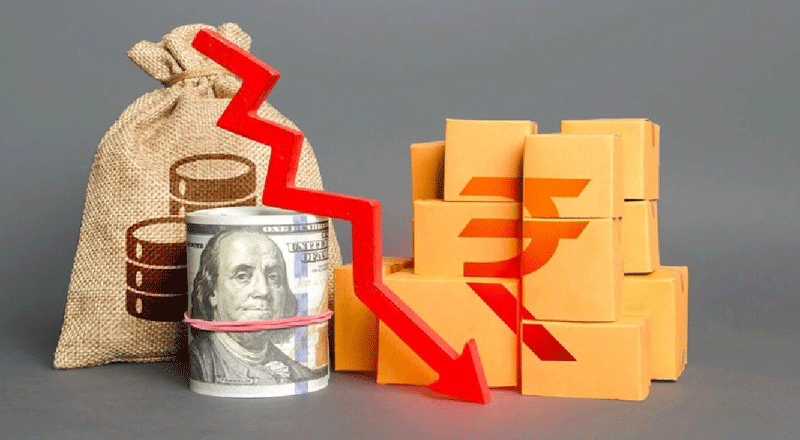- A bold projection by global brokerage Jefferies foresees India’s meteoric rise on the global economic stage, positioning it as the world’s third-largest economy by 2027.
- This optimistic outlook underscores India’s remarkable growth trajectory fuelled by demographic advantages, institutional enhancements, and governance improvements.
- India’s ascent is not confined to its GDP alone; its equity market is also on a trajectory of remarkable expansion.
- Persistent reforms have laid the groundwork for sustained growth.
- India’s growing influence on the global stage is further buoyed by improving geopolitical relations, particularly with key stakeholders.
- India’s emergence as a services export hub, bolstered by superior digital infrastructure and a skilled workforce, underscores its economic prowess.
A bold projection by global brokerage Jefferies foresees India’s meteoric rise on the global economic stage, positioning it as the world’s third-largest economy by 2027, with a Gross Domestic Product (GDP) poised to hit $5 trillion. This optimistic outlook underscores India’s remarkable growth trajectory fuelled by demographic advantages, institutional enhancements, and governance improvements.
According to Mahesh Nandurkar, an India Equity analyst at Jefferies, India’s GDP has demonstrated a robust Compound Annual Growth Rate (CAGR) of 7 percent in USD terms over the past decade, catapulting it from the eighth to the fifth largest economy. Building on this momentum, India is anticipated to achieve the milestone of becoming the third-largest economy by 2027, surpassing economic powerhouses like Japan and Germany.
India’s ascent is not confined to its GDP alone; its equity market is also on a trajectory of remarkable expansion. Currently ranked as the fifth-largest equity market globally with a market capitalization expected to reach $10 trillion by 2023, India’s financial markets are experiencing a surge in both domestic and foreign investment.
A confluence of factors propels India’s economic juggernaut. Persistent reforms have laid the groundwork for sustained growth, exemplified by landmark initiatives such as the Goods and Services Tax (GST) implementation in 2017 and bankruptcy reforms that have revitalized the corporate and banking sectors. These structural reforms, coupled with a burgeoning entrepreneurial ecosystem, are transforming India into a magnet for investment, evident in its burgeoning unicorn population and burgeoning services export industry.
India’s growing influence on the global stage is further buoyed by improving geopolitical relations, particularly with key stakeholders like the western world, Japan, Australia, and the Middle East. This geopolitical goodwill augurs well for India’s economic prospects, facilitating trade and investment opportunities.
Moreover, India’s robust corporate culture, marked by a Return on Equity (RoE) focus and a diverse listed equity market, instills confidence in minority investors. Supported by a robust institutional framework and a burgeoning domestic investor base, India’s equity market is poised for sustained growth, with an anticipated influx of $50 billion per year from domestic investors.
India’s emergence as a services export hub, bolstered by superior digital infrastructure and a skilled workforce, further underscores its economic prowess. With services exports nearing $450 billion annually and several global organizations anchoring a significant portion of their operations in India, the country is solidifying its position as a global services powerhouse.
As India charts its course towards economic supremacy, the convergence of favorable demographics, progressive reforms, and a thriving entrepreneurial ecosystem sets the stage for a transformative journey, propelling India towards unprecedented economic heights and cementing its status as a global economic powerhouse.
(With inputs from agencies)





